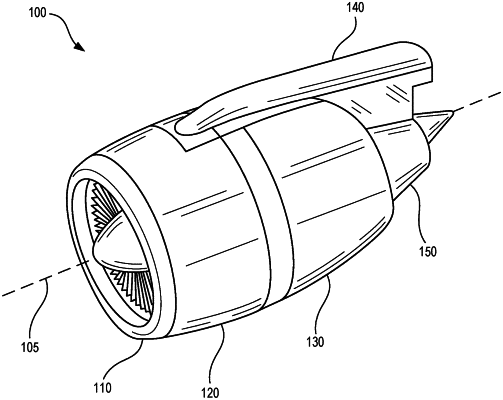| CPC B64D 29/06 (2013.01) [E05B 63/06 (2013.01); E05C 19/145 (2013.01); E05Y 2900/502 (2013.01)] | 20 Claims |

|
1. A latch hook length adjustment arrangement comprising:
a latch hook frame comprising a first wall and a second wall;
a first rod aperture disposed in the first wall of the latch hook frame;
a second rod aperture disposed in the second wall of the latch hook frame;
a latch hook body comprising a hook and a rod extending from the hook, wherein the first rod aperture is configured to receive the rod and the second rod aperture is configured to receive the rod;
an adjustment nut comprising a first side surface, a second side surface disposed opposite the adjustment nut from the first side surface, and a radially outer surface, wherein the adjustment nut is threadingly coupled to the rod;
a plurality of detent pockets disposed in the first side surface of the adjustment nut;
a bearing sleeve comprising a hollow sleeve portion surrounding the rod, a flange extending radially outward from the hollow sleeve portion, and a bearing disposed at least partially in the flange, the first rod aperture configured to receive at least a portion of the hollow sleeve portion;
a spring member configured to bias the adjustment nut against the bearing sleeve, the spring member is disposed opposite the adjustment nut from the bearing sleeve, and the spring member is disposed between the second wall and the adjustment nut;
wherein, in response to rotation of the adjustment nut in a first rotational direction with respect to the rod, the rod is configured to extend from the first rod aperture, and
in response to rotation of the adjustment nut in a second rotational direction with respect to the rod, the rod is configured to retract into the first rod aperture.
|